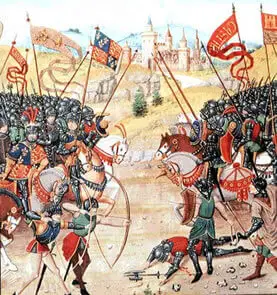Keep it secret.
Keep it under your hat
What's the meaning of the phrase 'Keep it under your hat'?
What's the origin of the phrase 'Keep it under your hat'?
On first hearing this seems a rather strange phrase. Why should people put anything under their hats and, even if they were to, why would that be associated with secrecy? The speculation is that putting an item under one’s hat would be a way of hiding it. Such trickery is recorded, as in the collection of stories published as The Adventurer, 1793:
“By a sudden stroke of conjuration, a great quantity of gold might be conveyed under his hat.”
The most commonly repeated speculation of the origin of this expression is that English archers in medieval times used to store spare bowstrings under their hats to keep them dry. That’s as likely as another fanciful story about English bowmen – that the French chopped off the fingers of any English archers captured during the Hundred Years’ War and that the English archers made defiant two-fingered V-signs to the French army at Agincourt to show that they still had their fingers and were ready to fire. Later wits have elaborated on the yarn to include the story that the archers also shouted ‘pluck yew’ (English longbows are made of yew wood) – a neat pun but complete nonsense.
Let’s just get that bowstring under the hat tale out of the way:
– Firstly, keeping dry isn’t keeping secret, so even if archers did store strings under their hats, and there’s no evidence that they did, where is the connection to the phrase’s meaning?
– Secondly, and it would have been kinder to put this first as it entirely dismisses the archer tale, the phrase isn’t known in English until the 19th century – so much for a medieval origin.
What else, apart from gold and string, might one keep under one’s hat? One’s head, of course. The phrase didn’t derive from putting anything under one’s hat at all – ‘under your hat’ simply meant ‘in your head’. That’s the meaning alluded to in early citations of the phrase in print. The oldest of such that I can find is in the novel The History of Pendennis by William Makepeace Thackeray, 1848:
Thus, oh friendly readers, we see how every man in the world has his own private griefs and business… You and your wife have pressed the same pillow for forty years and fancy yourselves united. Psha, does she cry out when you have the gout, or do you lie awake when she has the toothache? … Ah, sir – a distinct universe walks about under your hat and under mine.
The extended phrase ‘keep it under your hat’, which didn’t arise until the 20th century, simply meant ‘keep it in your head’, that is, ‘think it, but don’t say it’. An early example is found in P. G. Wodehouse’s Inimitable Jeeves, 1923:
It made such a hit with her when she found that I loved her for herself alone, despite her humble station, that she kept it under her hat. She meant to spring it on me later.
The history of “Keep it under your hat” in printed materials
Trend of keep it under your hat in printed material over time
Related phrases and meanings
Browse more Phrases
About the Author

Phrases & Meanings
A-Z
A B C D E F G H I J K L M N O P Q R S T UV W XYZ
Categories
American Animals Australian Bible Body Colour Conflict Death Devil Dogs Emotions Euphemism Family Fashion Food French Horses ‘Jack’ Luck Money Military Music Names Nature Nautical Numbers Politics Religion Shakespeare Stupidity Entertainment Weather Women Work
How did we do?
Have you spotted something that needs updated on this page? We review all feedback we receive to ensure that we provide the most accurate and up to date information on phrases.
